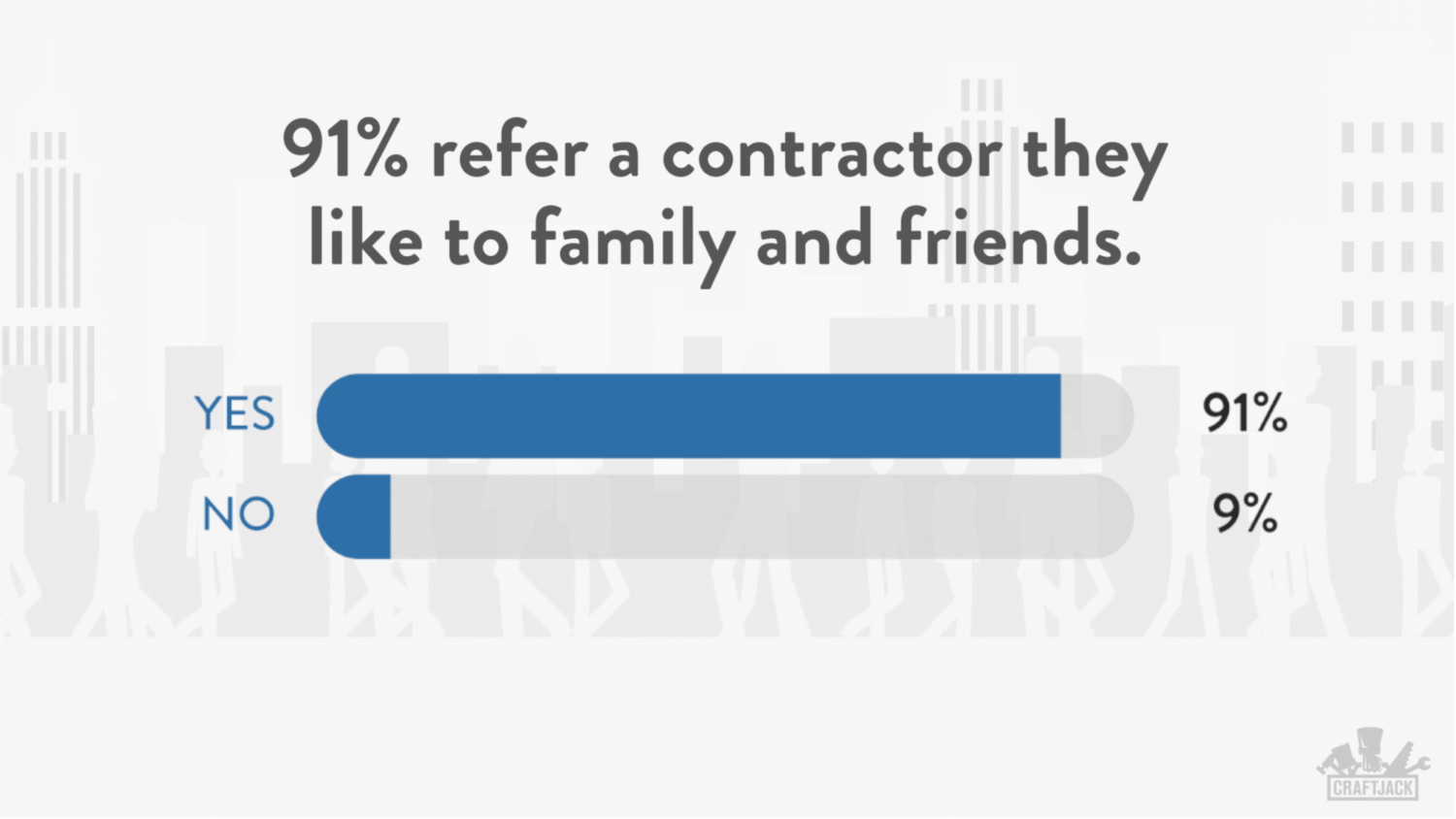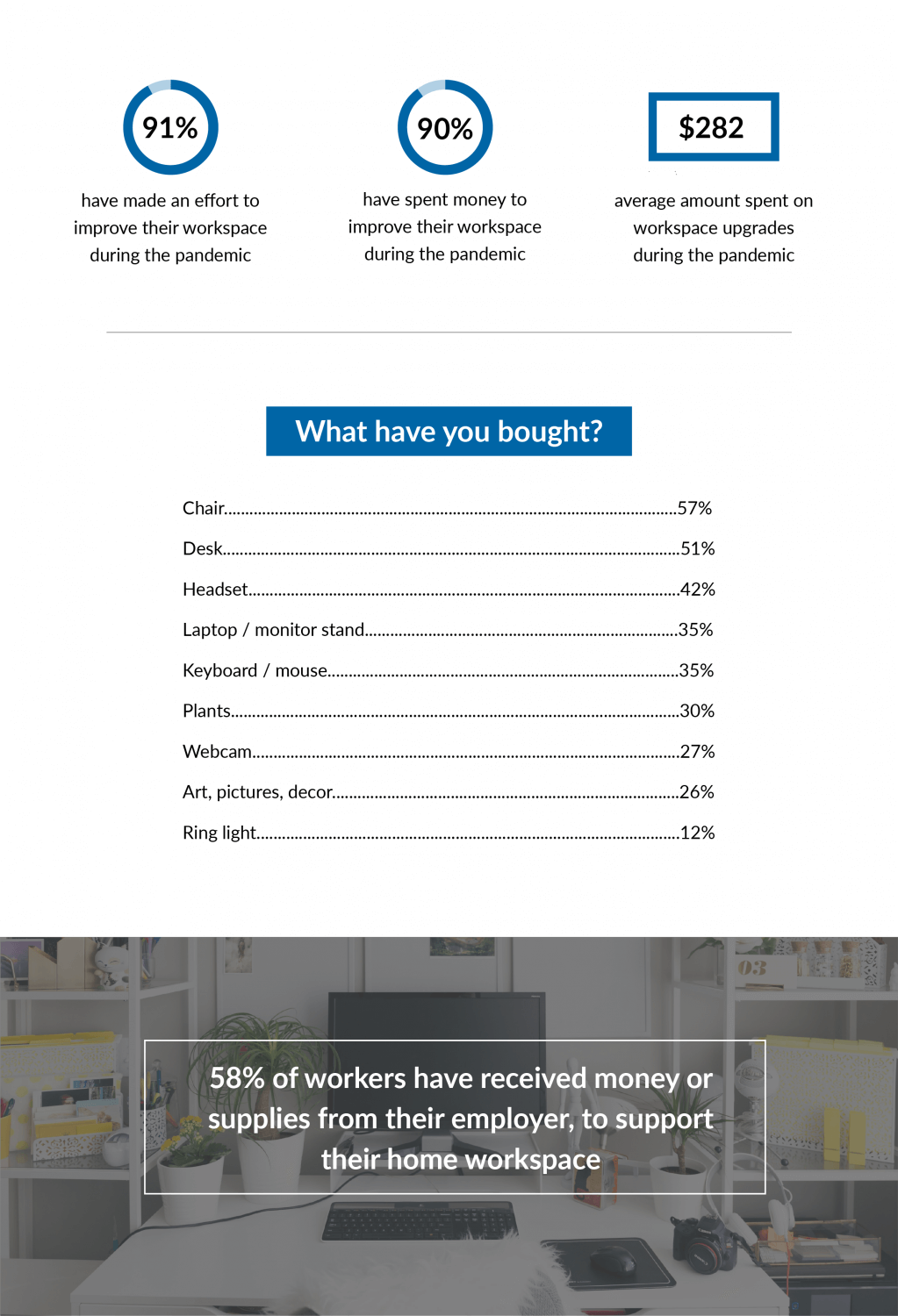Going Permanently Remote
Over the past year, the pandemic has forced a lot of reflection, and given how much time we’ve spent trapped in our homes, much of that reflection has centered on how and where we live, work and play.
As the prospect of long-term remote work emerges and grows in so many industries, millions of Americans are dreaming of new ways to live and new places to move. Plenty of people are hiring contractors and improving the home they’ve already got—making it better serve their evolving needs—but many more are considering a full change of scenery.
In particular, we were eager to hear about the mindset of people living in America’s many great cities, and understand what tension and opportunities are created by the prospect of working permanently remote.
We started with a simple question: Would you move, if given the opportunity to work permanently remote? A majority of Americans living in cities (61 percent) say yes. Not surprisingly, many of the most expensive and densely populated cities contain the highest percentages of people looking for a change of pace.
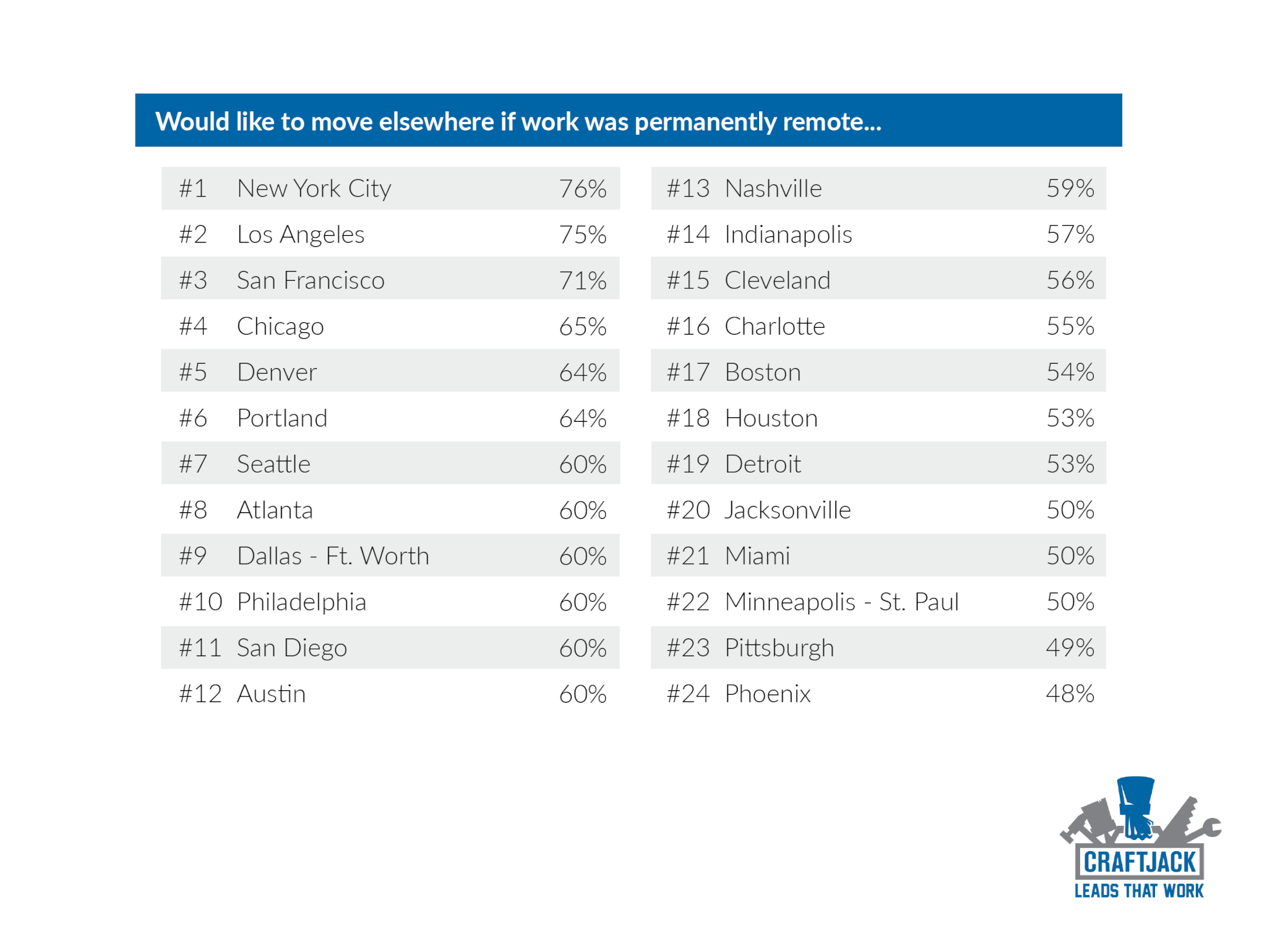
Of those who would leave their current city, we asked what reasons would most compel the move. Desire for a bigger, better home and lower cost of living were the top reasons cited, followed by desire for more access to nature. Interestingly, weather was the least-cited reason. And when we put the quality of a home head-to-head against the quality of its surrounding area, 66 percent said the area they live in is more important.
To be fair, some residents of major cities have emerged after a year of the pandemic and found they like their city better than ever before. We tip our cap to Indianapolis for having the most people who are grateful for what they’ve got.
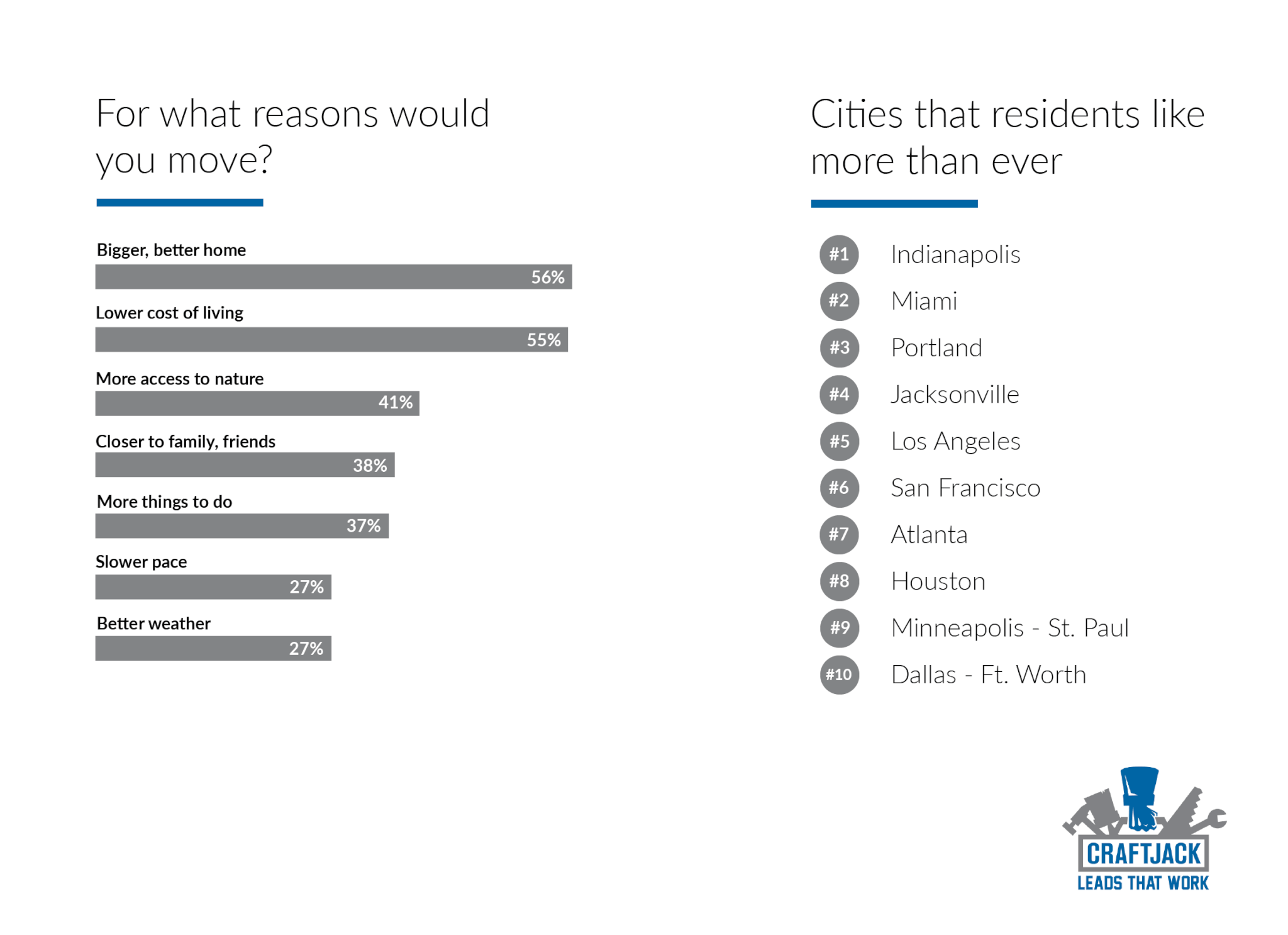
Next, we asked residents of major cities which other American city they’d move to if given the chance. Honolulu, San Diego and Seattle were most frequently selected, followed by Denver, Washington D.C., and Tampa – St. Petersburg. Notably, with the exception of Dallas – Ft. Worth, residents in Texas and Florida are committed to staying in-state. And no one wants to move further from home than Charlotte and Atlanta residents, both selecting Honolulu as their ideal.

We also asked people what they sense are the major trends right now—67 percent feel that the suburbs are “cooler” now than they were pre-pandemic, 69 percent say smaller cities are trendier than big cities, and 65 percent say it’s trendier to live out in the country right now, versus a big city.
According to our respondents, Texas, California and Florida are the three trendiest states to be right now, and Austin, TX is the single trendiest city of all.
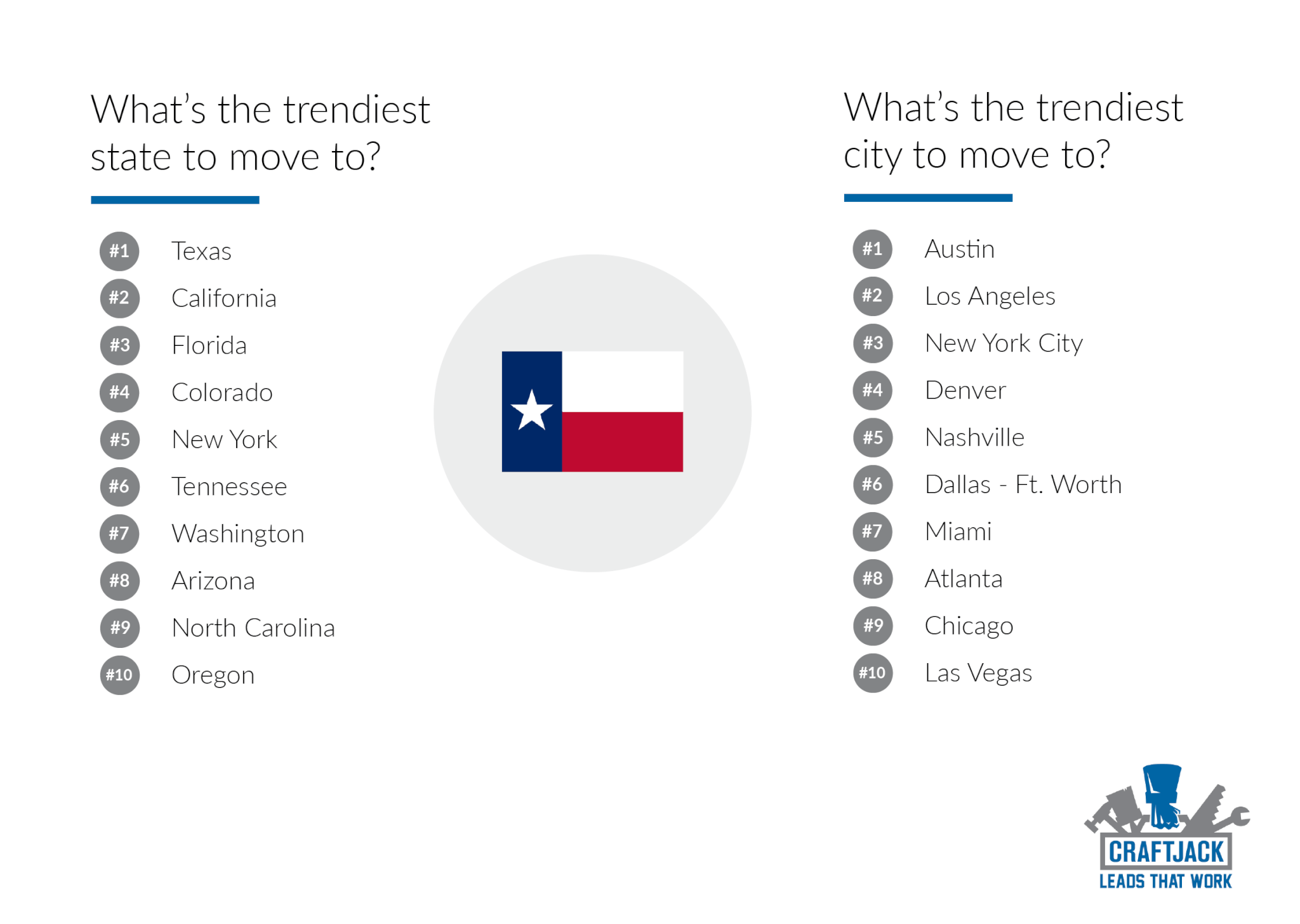
What about venturing out into the world, beyond the US? We asked people if they had to move abroad, where they would choose to live. Ironically, 250 years after we declared our independence from England, now Americans want to go back! The United Kingdom—including England, Scotland, Wales and Northern Ireland—was the top choice. Canada, France, Japan, and Italy rounded out the top five.
One curious trend that has emerged during the pandemic involves cities and states offering incentives for people to relocate. Notable examples include Tulsa, OK and the state of Vermont, each offering up to $10,000. Given this, we decided to ask people what it would take to compel them to a new location, particularly one they’re not particularly fond of.
Of those we surveyed, 78 percent said they would need $100,000 to move to a city they don’t really like, and approximately one in four (23 percent) would need at least $250,000.
We also asked about the opposite scenario—what pay cut would people take to relocate to their most ideal spot? Most Americans (83 percent) would only take a 10-20 percent pay cut to make that move, with 60 percent saying 10 percent would be the maximum they would tolerate.
This brings up one of the most contentious debates around the future of remote work, relocation and distributed workforces: should companies adjust salaries down—making what’s called a locality adjustment—when an employee moves from a more expensive area to a less expensive one?
The answer from workers is a resounding _no—_87 percent believe they should be paid the same amount they’re currently being paid, no matter where they move.

Finally, on the topic of having teams and workforces distributed across multiple locations, we asked about dynamics unique to such work, beginning with time zones. Of the people who have coworkers working in multiple time zones, 57 percent say the difference routinely interferes with their work. And for those who are in the minority in terms of their time zone, 57 percent start and end their work day when the majority of their coworkers do, versus 43 percent who work on their own local time.
How do people feel about starting a permanent remote position, with the possibility that they will never meet their coworkers in person? Eighty-seven percent of people said if all else looks good, they would take that job.

Methodology
From March 29 – April 9, we surveyed 2,888 Americans, including 50 to 150 residents in each of 24 major American cities. Forty-seven percent of our respondents were female and 53 percent male, with an average age of 38 years old and an age range of 18 to 70 years old.
For media inquiries, contact media@digitalthirdcoast.net
Fair Use
Feel free to use this data and research with proper attribution linking to this study. When you do, please give credit and link to craftjack.com
Are you a contractor looking for more leads from homeowners in your area?
Find out how CraftJack lead generation works, and if you’re intrigued, fill out this form to have someone from the CraftJack Membership team reach out to answer any of your remaining questions.

